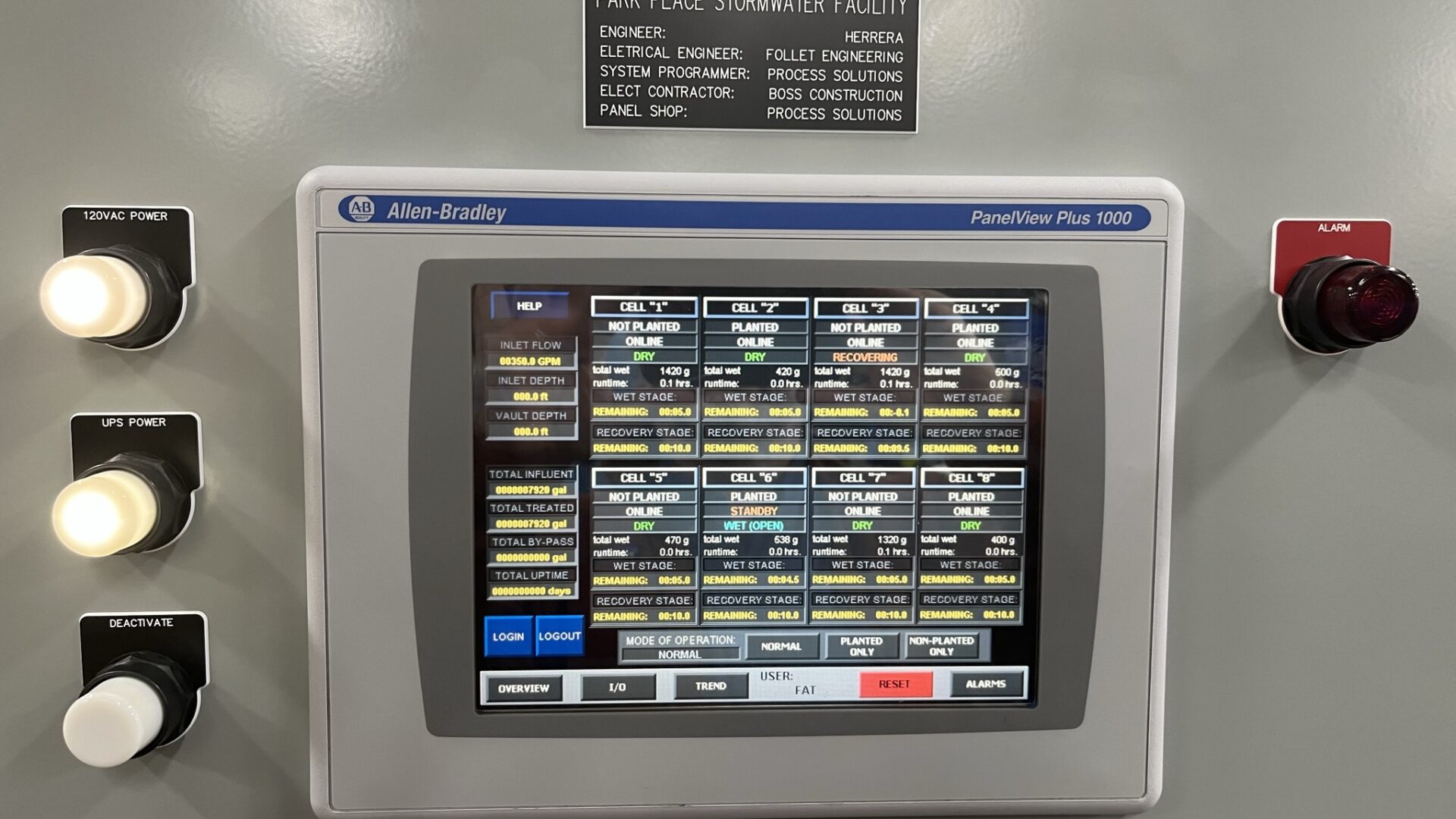As learned in Chapter 1, the Park Place Stormwater Facility was originally constructed in 1994 as a set of wet ponds. Almost a decade later in 2005, the facility was reconstructed as an amended sand filter. In this installment, we discuss the third redesign of the facility beginning in 2021, which seeks to maximize site performance by increasing the volume of water treated at the site and the phosphorus removal rate of the treatment media.
The project site sits near an existing Lake Whatcom outfall serving a 179-acre basin of suburban development and forest. The existing facility treated 114 of those acres and was sized for a maximum influent flow rate of 1.1 cubic feet per second (cfs); all stormwater flows above 1.1 cfs bypassed the existing facility and discharges directly to Lake Whatcom.
Herrera’s redesign includes upstream conveyance modifications to increase the basin served by the facility to 168 acres and a design flow rate of 5.3 cfs. This equates to about 95% of average annual runoff volume and is anticipated to remove over 80 lbs of total phosphorus per year.
Several problems are often overlooked when designing media filtration-based stormwater facilities at this regional scale and in this climate:
- Inaccuracies in standard hydrologic models which can be negligible at the site scale can become large at the regional scale.
- Managing the high sediment load without it becoming a maintenance burden.
- Baseflows from shallow groundwater contributions and long duration flows can lead to the media becoming anoxic due to prolonged media saturation (anoxic conditions cause iron-phosphorous complexes to dissolve and release the bound phosphorus back into the treated water).
- Frequent, but small, storms are treated by only a small portion of the media near the inlet and a large portion of the media only sees stormwater in the largest events.
To ensure the facility design is based on an accurate prediction of hydrology, including base flow, the team monitored influent stormwater and local rainfall over the course of a year to calibrate the Western Washington Hydrology Model (WWHM) basin model. Results from this monitoring effort showed that measured flows were about 20% – 40% higher than what the WWHM would have predicted with default parameters.
The team managed the sediment using a manufactured pre-treatment device along with better flow distribution. To ensure even dosing, the flow rate of stormwater entering the facility is continuously measured and fed to a Programmable Logic Controller (PLC) based automated dosing system. This system directs flows to one or more cells by operating a set of valves according to an algorithm created by Herrera. The algorithm directs water to a cell bringing more cells online as flows increase and ensures that each cell receives an equal amount of volume over time. This also prevents cells from becoming oversaturated by allowing cells to adequately dry and recover before receiving flows again.
The PLC uses a touch screen display to adjust the algorithm and make changes to the dosing regime, drying times, the number of cells offline for maintenance, and other features. The PLC also tracks the total volume treated by each cell, while interconnecting with the City’s SCADA system to provide 24/7 monitoring for faults and alarms.

Each media filter cell contains POST media, consisting of an 18-inch-deep primary filter media underlain by a 12-inch-thick polishing layer. Filtered runoff is collected through an underdrain system and discharged out of the facility and into Lake Whatcom. Each cell underdrain is controlled using an orifice, limiting media infiltration rates to 60 in/hr. Through this flow control application, stormwater runoff has an increased contact time with the media while accounting for filter clogging.
Herrera prepared the final bid package Plans, Specifications, and Cost Estimate for the Park Place Facility in early 2021. Boss Construction of Bellingham began construction in June 2021 with project completion anticipated for June 2022. Check back next week for our final edition of Herrera’s Park Place blog series to learn about our current post-construction monitoring efforts! For more information on this project, please contact Chris Webb, PE.
